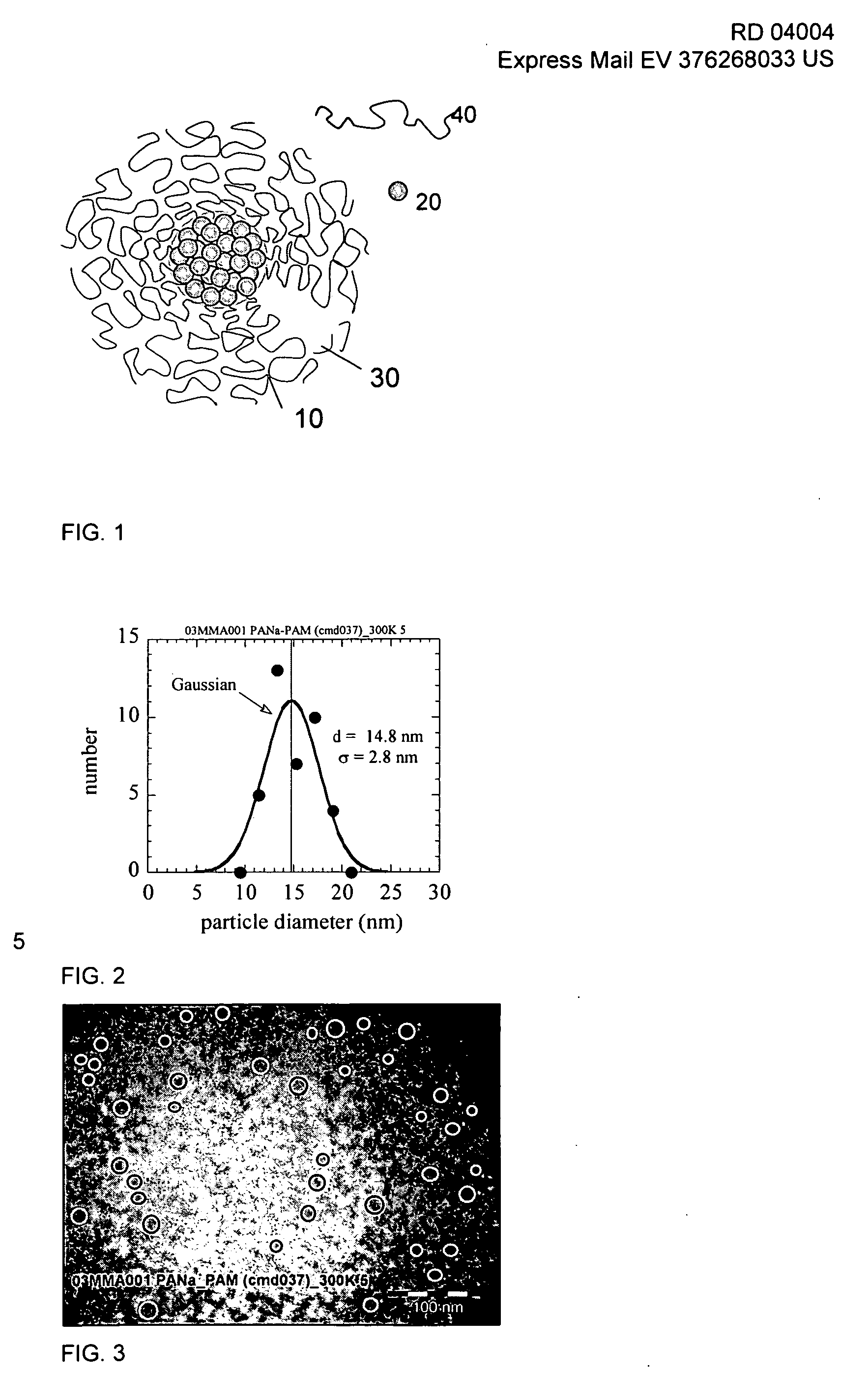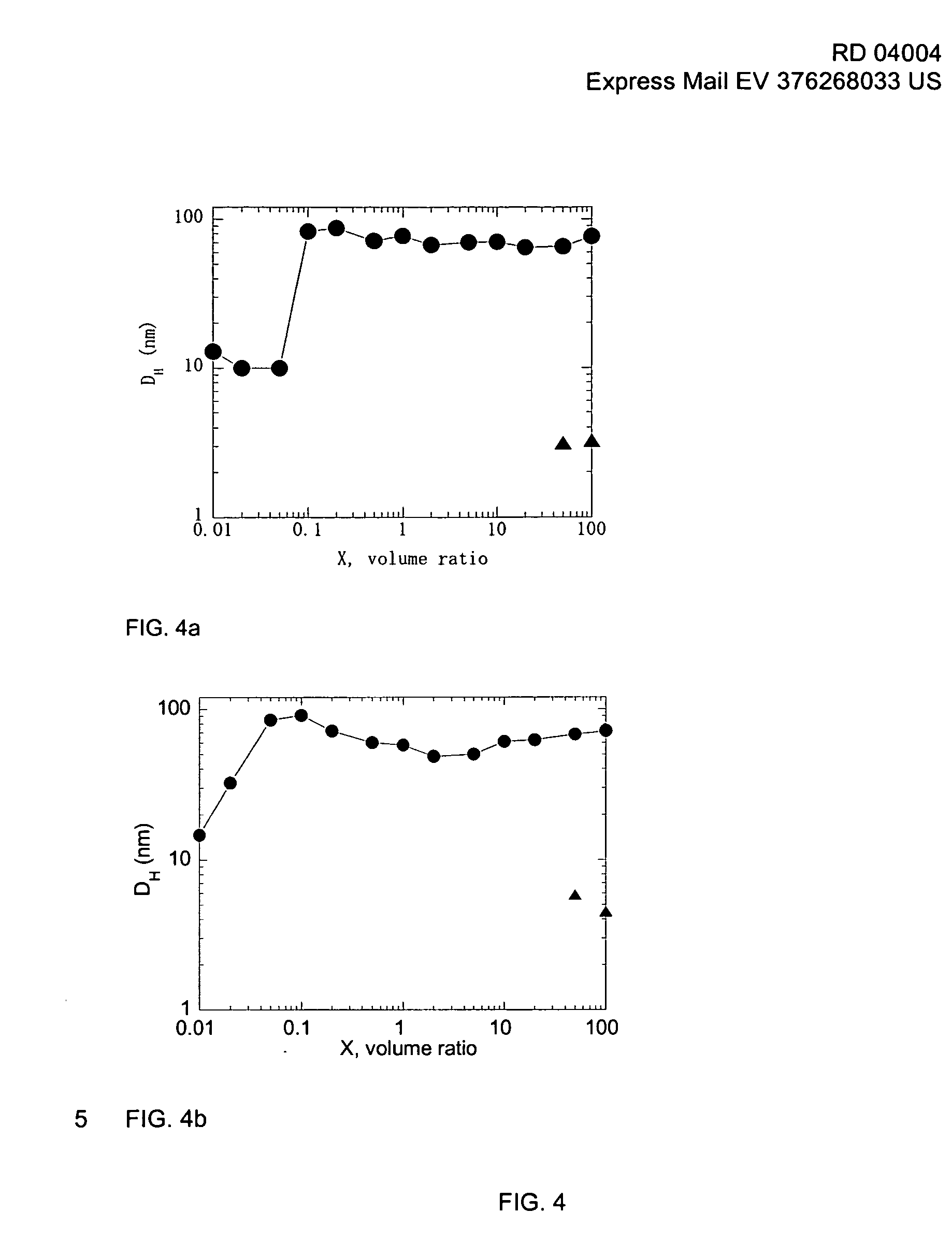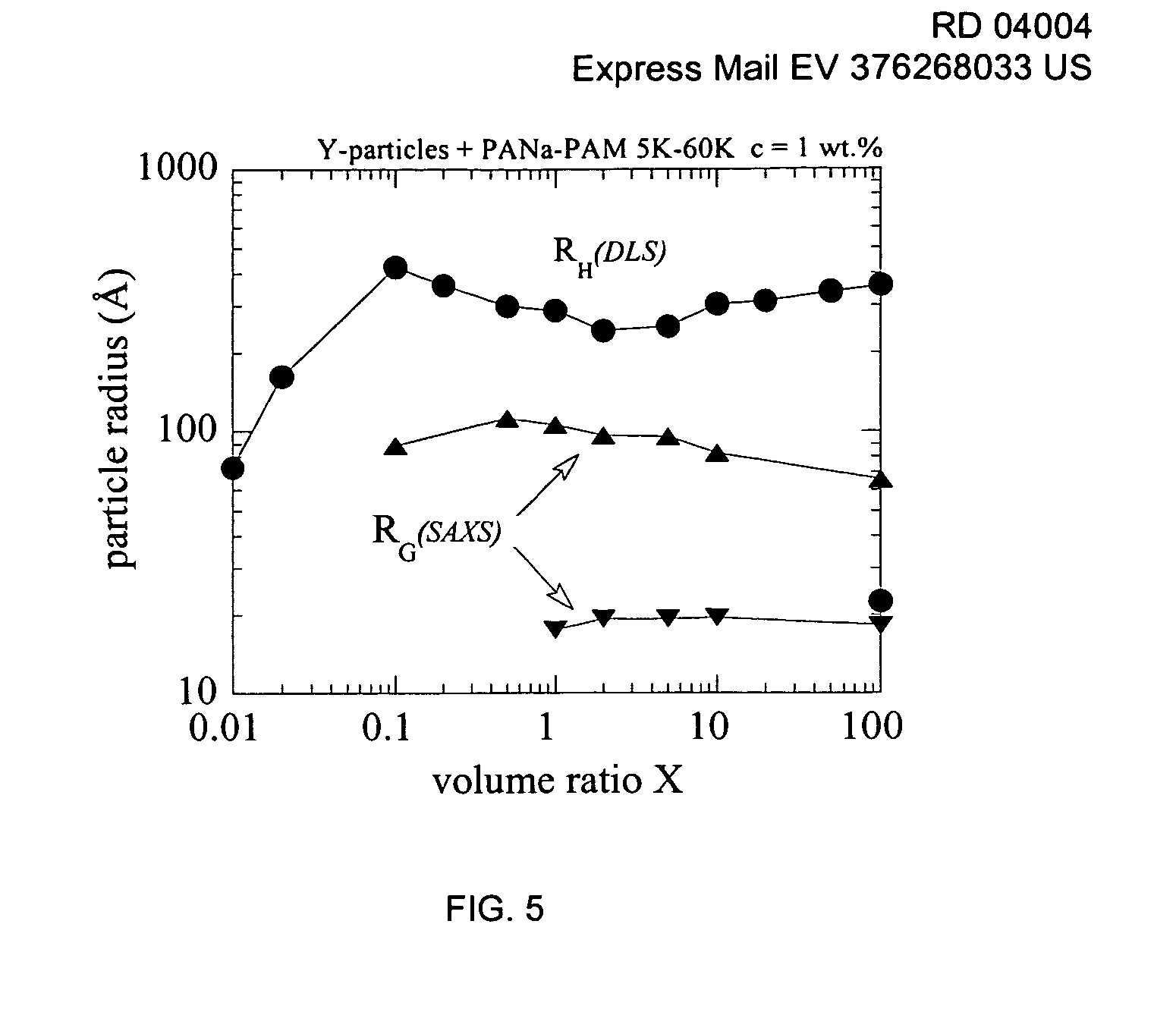Rare earth aggregate formulation using di-block copolmers
a technology of di-block copolmer and rare earth particles, applied in the direction of mixing, transportation and packaging, coating, etc., can solve the problems of narrow particle size distribution or insufficient narrow distribution, and achieve the effect of improving ph stability and ph rang
- Summary
- Abstract
- Description
- Claims
- Application Information
AI Technical Summary
Benefits of technology
Problems solved by technology
Method used
Image
Examples
example 1
[0149] Yttrium polymer aggregates were formed as the result of the association between yttrium nanoparticles and block copolymers. The preparation of the yttrium polymer aggregates are described as follows.
[0150] Yttrium nanoparticle solution: Yttrium nanoparticles of about 4 nanometers (nm) were obtained from synthesis at a weight concentration of 25.5 wt. %. The yttrium nanoparticles were then diluted with tridistilled water to an initial concentration C0 of 2 wt. % to form a yttrium nanoparticle solution. The yttrium nanoparticle solution was then observed via light scattering in order to verify that the size of the nanoparticles had not changed during the process and remained at 4 nm.
[0151] Block Copolymer solution: A block copolymer solution was formed from a powder block copolymer and water at the same initial concentration C0=2 wt. %. The block copolymer used in this example was a poly(sodium acrylate)-b-poly(acrylamide) di-block, abbreviated as PANa-b-PAM, with molecular w...
example 2
[0164] A solution of yttrium hydroxyacetate nanoparticles were prepared and in conjunction with various copolymers to demonstrate various embodiments of the invention. The yttrium hydroxyacetate nanoparticles solution will hereinafter be referred to as the yttrium base dispersion. Accordingly the yttrium base dispersion for use in this example was prepared in a reflux reactor of 1,000 ml equipped with a thermometer and a an agitating rod, by dispersing 86.5 g of yttrium oxide powder (purity of 99.99 % made by Rhodia Co., Ltd.) into 500 ml of 2N acetic acid solution (supplied by Aldrich Co., Ltd.) at an agitation rate of 300 rpm. The mixture was then heated to 100° C. in an oil bath. After reaching 100° C., the mixture was kept at 100° C. for 2 hours. The resulting solution was cooled down to the room temperature and centrifuged at 10,000 rpm to remove any non-dissolved yttrium oxide. The final solution was used as the yttrium base dispersion. The final pH of the yttrium base dispers...
PUM
| Property | Measurement | Unit |
|---|---|---|
| Concentration | aaaaa | aaaaa |
| Size | aaaaa | aaaaa |
| Mixture | aaaaa | aaaaa |
Abstract
Description
Claims
Application Information
 Login to View More
Login to View More - R&D
- Intellectual Property
- Life Sciences
- Materials
- Tech Scout
- Unparalleled Data Quality
- Higher Quality Content
- 60% Fewer Hallucinations
Browse by: Latest US Patents, China's latest patents, Technical Efficacy Thesaurus, Application Domain, Technology Topic, Popular Technical Reports.
© 2025 PatSnap. All rights reserved.Legal|Privacy policy|Modern Slavery Act Transparency Statement|Sitemap|About US| Contact US: help@patsnap.com



